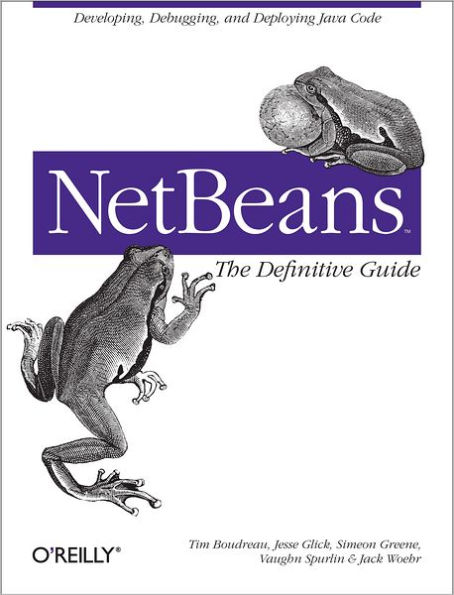As the Java programming language has increased in both functionality and complexity, developers have demanded more of their program editors. Gone are the days when a simple visual editor is sufficient for even small programming projects. While there are numerous IDEs available today for use by Java developers, one stands above the rest, not only for its functionality, but for its extensibility: NetBeans.In NetBeans: The Definitive Guide, you'll find out how to use this IDE to its fullest, making your Java programming more efficient and productive than ever before. You'll understand the basics of the IDE, and quickly be utilizing the various editor and explorer windows. You'll also master many of NetBeans advanced features, and be working with XML documents, CVS repositories, Javadoc trees, and web applications, all within the NetBeans framework.In addition to teaching you how to use the existing features of NetBeans, this work goes on to cover developing additional modules for NetBeans. Through this instructional portion of the book, you will master the NetBeans APIs, and learn how to enhance NetBeans for your own specific needs. Whether you need to add customized behavior to handle your proprietary file formats, or want to redistribute NetBeans as a proprietary product, NetBeans: The Definitive Guide will allow you to master this open source IDE and all of its advanced features. Whether you are an enterprise developer looking for an IDE that can handle your complex program tasks, an open source developer looking to integrate NetBeans into your own visual projects, or a manager trying to maximize your team's development potential,NetBeans: The Definitive Guide is the book for you.
As the Java programming language has increased in both functionality and complexity, developers have demanded more of their program editors. Gone are the days when a simple visual editor is sufficient for even small programming projects. While there are numerous IDEs available today for use by Java developers, one stands above the rest, not only for its functionality, but for its extensibility: NetBeans.In NetBeans: The Definitive Guide, you'll find out how to use this IDE to its fullest, making your Java programming more efficient and productive than ever before. You'll understand the basics of the IDE, and quickly be utilizing the various editor and explorer windows. You'll also master many of NetBeans advanced features, and be working with XML documents, CVS repositories, Javadoc trees, and web applications, all within the NetBeans framework.In addition to teaching you how to use the existing features of NetBeans, this work goes on to cover developing additional modules for NetBeans. Through this instructional portion of the book, you will master the NetBeans APIs, and learn how to enhance NetBeans for your own specific needs. Whether you need to add customized behavior to handle your proprietary file formats, or want to redistribute NetBeans as a proprietary product, NetBeans: The Definitive Guide will allow you to master this open source IDE and all of its advanced features. Whether you are an enterprise developer looking for an IDE that can handle your complex program tasks, an open source developer looking to integrate NetBeans into your own visual projects, or a manager trying to maximize your team's development potential,NetBeans: The Definitive Guide is the book for you.

NetBeans: The Definitive Guide: Developing, Debugging, and Deploying Java Code
674
NetBeans: The Definitive Guide: Developing, Debugging, and Deploying Java Code
674
Product Details
| ISBN-13: | 9781449332556 |
|---|---|
| Publisher: | O'Reilly Media, Incorporated |
| Publication date: | 10/22/2002 |
| Sold by: | Barnes & Noble |
| Format: | eBook |
| Pages: | 674 |
| File size: | 9 MB |
